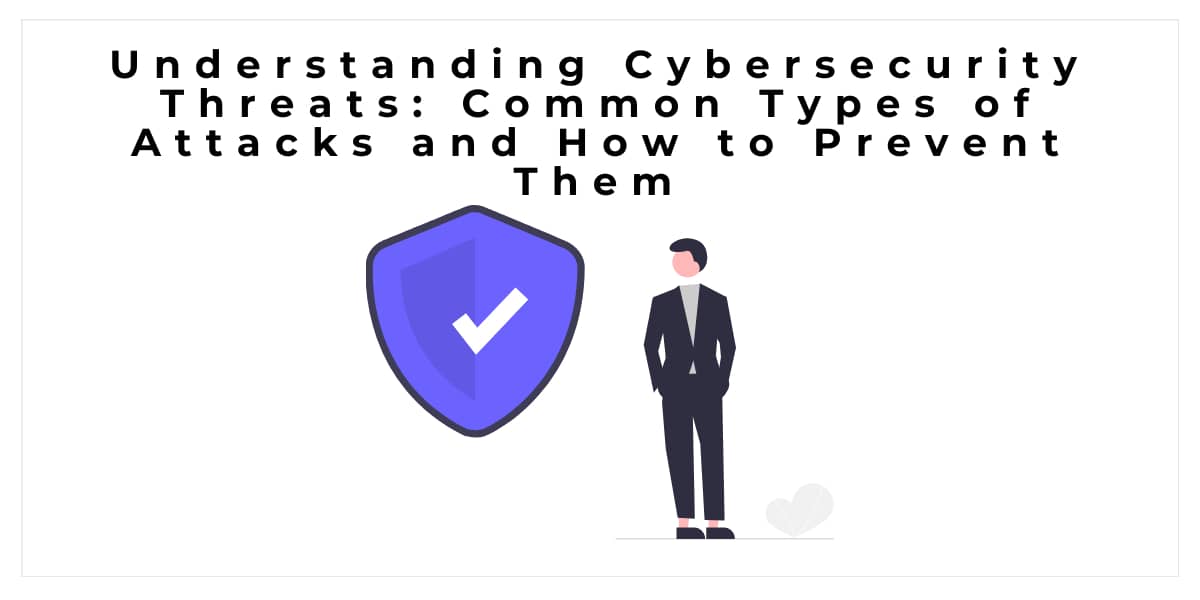In this digital age, safeguarding against cyber threats is essential. Regrettably, as bad actors grow increasingly adept and inventive in their cyber-attack, staying updated on emerging threats is vital.
That's why we've assembled this comprehensive guide that examines various cyberattacks and protection methods. From exploring effective mitigation controls to understanding why security awareness training is key, by taking these proactive steps, you'll be better equipped to limit any damage caused by a potential breach or attack.
To illustrate just how serious an issue cybersecurity has become, let us tell you a story...
The Wake-Up Call
As the CEO of a flourishing business, Alex was overwhelmed with dread when he arrived to work one morning and discovered that our network had been hacked. Not only were his confidential files stolen, but also our website had been tarnished by malicious individuals. This all-too-frequent event highlights the importance of being vigilant and ready for cyber threats.
There are numerous types of cyber attacks today - each with their own distinct features and attack methods. Several cases involve phishing electronic mail, ransomware intrusions, distributed denial-of-service (DDoS) offensives, malware insertions, SQL injection abuses, and beyond. Understanding these risks is crucial for safeguarding ourselves in the future.
Common Cyber Attacks and Their Mechanics
There are numerous types of cyber attacks today - each with their own distinct features and attack methods. Familiarizing yourself with essential cyber security terms can greatly enhance your ability to respond effectively to threats. Understanding terms like "malware," "phishing," and "firewall" enables you to make informed decisions and take swift actions to safeguard your systems and data. Some of the most prevalent attacks include:
1. Malware
Malware can cause severe damage to systems by compromising data or providing attackers with unauthorized access. Viruses, worms, ransomware and Trojans are just some examples. To prevent malware infections, having a reliable Mac antivirus program is essential, along with employing firewalls and keeping software up. The Mac system is definitely more difficult to infect, however, virus protection should always be turned on.
2. Phishing
Phishing attacks are common methods used by cybercriminals to deceive users into sharing confidential information or downloading malware through suspicious emails, websites or messages - so caution should always be taken when opening unfamiliar links or attachments.
3. Man-in-the-Middle Attacks
Man-in-the-Middle (MITM) attacks happen when a malefactor intercepts dialogue between two entities, intending to overhear/alter the data shared; thus, employing end-to-end encryption and secure conversational channels can bolster defenses against such risks.
4. DDoS Attacks
Distributed Denial of Service (DDoS) assaults bombard a website/server with massive amounts of traffic making them inaccessible for users; however network infrastructure reinforcement paired with content delivery networks as well as DDoS protection services could minimize the effects caused by this type of attack significantly.
5. SQL Injection
SQL injection preys on web applications inserting malicious code into input fields which allows attackers access & control over its databases; developers must ensure user inputs are validated before using parameterized queries & only give out database privileges following least privilege principles for best defense measures possible here too!
6. Zero-Day Exploits
Zero-day exploit is an attack that takes advantage of a previously unknown security vulnerability, leaving no time for patch creation. Thus, keeping up to date with system updates should be observed at all times if you don't want your system compromised!
How to Prevent Them
While implementing preventive measures is necessary, having strategies to minimize damage during an attack is equally important. Consider exploring 24/7 proactive IT support options, such as USWired's IT solutions to enhance your cybersecurity defenses. Some effective mitigating controls and strategies include:
1. Incident Response Planning
Creating an all-inclusive incident reaction strategy guarantees that your institution is equipped to respond swiftly and effectively upon a cyber onslaught. This plan should outline the roles and responsibilities of key personnel, establish communication protocols, and detail the steps to be taken to contain, eradicate, and recover from the attack.
2. Network Segmentation
Partitioning your network can help contain an attack's spread and lessen the potential damage from a single breached device. By restricting access between segments and implementing strong access controls, you can effectively isolate sensitive data and systems from potential threats.
3. Data Backup and Recovery
Regularly backing up critical data is crucial for minimizing the impact of data loss or corruption resulting from a cyber attack. Implement a comprehensive backup strategy that includes multiple layers of redundancy, such as offsite and cloud-based storage. Additionally, develop and regularly test a data recovery plan to ensure you can quickly restore data in the event of an attack.
4. Multi-Factor Authentication (MFA)
With cyberattacks constantly advancing, having a strong cybersecurity strategy is crucial for organizations. This should involve multiple layers of security measures and mitigating controls that are designed to protect digital assets from malicious activity and minimize the consequences when an attack does occur.
5. Continuous Monitoring and Threat Detection
Preventative steps such as user authentication with two-factor or multi-factor identification can help reduce unauthorized access by requiring users to verify their identity through combinations of something they know (such as passwords), possess (like a security token), or are (including biometric identifiers). Understanding the importance of privileged access management is also key.
Continuous monitoring and threat detection using tools like Intrusion Detection Systems (IDS) or Security Information & Event Management systems can provide real-time visibility into your network's activities, allowing you quickly detect any suspicious behavior before it causes significant damage.
Final Thoughts
I think you get the point! Having comprehensive training programs on secure data handling practices will ensure employees are aware of how best to avoid becoming victims of attacks.
Your team must understand common tactics attackers use. This will ultimately minimize the chances that one will be successful against them.








